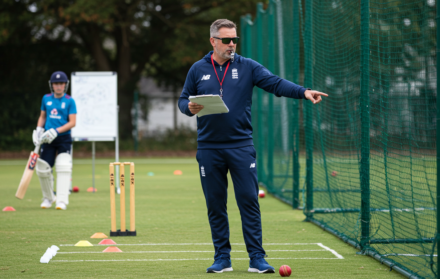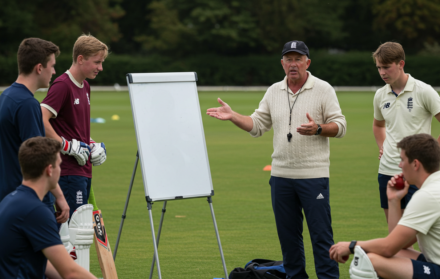
How To Read Pitches In Cricket And Adapt To Diverse Surfaces
Cricket, a sport known for its subtleties and complexities, requires players to have a keen understanding of the playing conditions, particularly the pitches. The ability to read pitches and adapt to diverse surfaces is a crucial skill for cricketers.
By analyzing various factors and observing key indicators, players can make informed decisions and adjust their techniques accordingly.
Understanding the importance of reading pitches in cricket is essential. It not only provides insights into how the pitch will behave during the game but also helps players strategize and maximize their performance. The impact of pitches on batting and bowling cannot be overstated, as they can greatly influence the outcome of a match.
When reading pitches, several factors need to be considered. The condition of the pitch and the prevailing weather conditions play a significant role. Different types of soil and the preparation of the pitch also affect its behavior.
Visual observations of the pitch, such as its grass cover, color, hardness, presence of cracks or rough patches, and the bounce and carry of the ball, provide valuable information for players.
To effectively read pitches in cricket, players need to assess the grass cover, as it can affect the movement and behavior of the ball. Noticing the color and hardness of the pitch can give insights into its dryness or moisture content.
Analyzing the presence of cracks or rough patches helps determine the level of wear and tear. Observing the bounce and carry of the ball aids in anticipating its trajectory. identifying spin and swing early on is essential for batsmen and bowlers alike.
Monitoring the ball behavior after pitching helps players gauge the pitch’s response to different types of deliveries.
Adapting to diverse surfaces is a crucial aspect of cricket. Players need to adjust their batting techniques according to the pitch’s behavior and modify their bowling strategies to exploit its characteristics. Fielding tactics also vary depending on the pitch, requiring players to position themselves strategically and anticipate the ball’s trajectory.
The Importance of Reading Pitches in Cricket
Cricket enthusiasts, listen up! Discover the critical significance of reading pitches in cricket and gain an edge over your opponents. Dive into the sub-sections as we uncover the secrets behind understanding the role of pitch in cricket and how it impacts both batting and bowling.
Buckle up as we explore the mind-boggling complexities of this essential aspect of the game, backed by solid facts and expert insights. Get ready to take your cricket skills to the next level on diverse surfaces!
Understanding the Role of Pitch in Cricket
The role of the pitch in cricket is of utmost importance as it determines the outcome of a match. Both batsmen and bowlers need to understand the significance of the pitch in order to effectively strategize their game plan.
The behavior of the ball in cricket is greatly influenced by the pitch, which can either make it easier or more difficult for batsmen to score runs and for bowlers to take wickets. Several factors such as the pitch condition, soil type, grass cover, and weather conditions all contribute to the characteristics of the pitch.
By carefully analyzing visual cues such as grass cover, color, hardness, and the presence of cracks or rough patches, players can anticipate how the ball will bounce, carry, spin, and swing on a particular pitch.
This knowledge empowers them to adapt their techniques and strategies accordingly, thereby maximizing their chances of success on different pitches.
Impact of Pitches on Batting and Bowling
The impact of pitches on batting and bowling in cricket is significant. It can heavily influence the outcome of a match and the performance of players.
Here is a breakdown of how pitches affect batting and bowling:
Impact on Batting
- Bounce and Pace: Pitches with high bounce and pace favor fast-paced batsmen who can attack the bowlers.
- Spin and Turn: Pitches with dry surfaces tend to assist spinners, making it difficult for batsmen to play their shots.
- Swing: Pitches with grass cover and moisture favor swing bowlers who can generate movement in the air.
Impact on Bowling
- Bounce and Seam Movement: Pitches with uneven bounce and pronounced seam movement make it challenging for bowlers to control their line and length.
- Spin and Variation: Pitches with turn and grip are advantageous for spin bowlers as they can exploit the conditions and deceive the batsmen.
- Swing and Reverse Swing: Pitches that assist swing and reverse swing allow bowlers to swing the ball both ways, making it challenging for batsmen to anticipate.
Factors to Consider when Reading Pitches
When it comes to reading pitches in cricket and adapting to diverse surfaces, there are several key factors to consider. In this section, we will explore these factors and how they can impact the game.
From pitch conditions and weather to soil type and pitch preparation, understanding these elements is crucial for any cricket player.
We’ll dive into the importance of visual observations in gauging the behavior and characteristics of a pitch. So, get ready to uncover the secrets behind mastering the art of reading pitches in cricket!
Pitch Condition and Weather
The condition of the pitch and weather are crucial factors for cricket players to consider when reading pitches. These elements can significantly impact the outcome of the game and the strategies employed by both teams.
Pitch Condition: The condition of the pitch plays a vital role in determining the type of assistance provided to bowlers. A dry pitch offers more assistance to spin bowlers, making it challenging for batsmen. On the other hand, a green pitch offers more assistance to fast bowlers, increasing swing and help with seam movement. For batsmen, a flat pitch is ideal as it provides minimal assistance to bowlers.
Weather: Weather conditions can also have a significant impact on the game. Sunny weather can result in a dry and hard pitch, favoring spinners. Cloudy weather, on the other hand, can aid swing bowlers by providing moisture and movement in the air. In contrast, rainy weather can make the pitch soft and slow, making it difficult for the ball to carry and reducing the pace of the game.
Pro-tip: Stay updated on pitch conditions and weather forecasts to adapt your gameplay accordingly and gain an edge over your opponents.
Soil Type and Pitch Preparation
When it comes to reading pitches in cricket, understanding the soil type and pitch preparation is crucial. Here are some steps to consider when analyzing these factors:
- Inspect the soil type: Different soil types, such as sandy, clay, or loamy, can affect the behavior of the ball.
- Observe pitch preparation: Assess how the pitch has been prepared, including rolling, watering, and leveling. This can impact the bounce and pace of the ball.
- Consider the hardness of the pitch: A hard pitch is generally favored by batters, as it allows for better stroke play.
- Notice the cracks or rough patches: These areas can create variations in bounce and make it challenging for batters.
- Analyze the moisture level: A damp or wet pitch can assist bowlers in achieving more swing or seam movement.
By considering the soil type and pitch preparation, players can better assess the conditions and adapt their strategies accordingly.
When it comes to reading pitches in cricket, it is crucial to have an understanding of both the soil type and pitch preparation. In order to do so, follow these steps:
- Begin by inspecting the soil type as it can have a significant impact on the behavior of the ball. It can vary from sandy, clay, to loamy.
- Pay attention to the pitch preparation. Evaluate how the pitch has been rolled, watered, and leveled. These preparation techniques directly affect the bounce and pace of the ball.
- Consider the hardness of the pitch. Batters generally prefer a hard pitch as it enables better stroke play.
- Take note of any cracks or rough patches on the pitch. These areas can create unpredictable variations in bounce, making it challenging for batters.
- Analyze the moisture level of the pitch. A damp or wet pitch can effectively assist bowlers in achieving swing or seam movement.
By giving due consideration to the soil type and pitch preparation, players can accurately assess the conditions at hand and adjust their strategies accordingly.
Visual Observations of the Pitch
When analyzing pitches in cricket, visual observations of the pitch play a vital role in comprehending its characteristics. Here are some key elements to watch out for:
- Color: The color of the pitch can indicate its dryness or moisture levels. A dry, cracked surface may favor spinners, while a green pitch suggests assistance for fast bowlers.
- Texture: The texture of the pitch can affect how the ball behaves. A hard pitch may provide extra bounce, while a soft and crumbling surface may assist spin bowling.
- Presence of grass: The amount and height of grass on the pitch can impact the movement of the ball. Longer grass may assist seam and swing bowlers.
- Cracks or rough patches: Observe if there are any cracks or rough patches on the pitch, as they can affect the bounce and make it harder for batsmen.
- Previous ball behavior: Take note of how the previous deliveries have behaved on the pitch, as this can provide valuable insights into its characteristics.
By paying close attention to these visual cues, cricket players can adapt their strategies and tactics accordingly to capitalize on the conditions presented by the pitch.
How to Read Pitches in Cricket

Cracking the code of pitch reading in cricket requires a keen eye and astute observation. In this section, we will dive deep into the art of deciphering pitches, uncovering their grass cover, color, hardness, cracks, and rough patches.
We’ll explore how to gauge the bounce and carry of the ball and unravel the secrets of identifying spin and swing.
Get ready for a thrilling journey of monitoring ball behavior as we unravel the mysteries of reading pitches in cricket!
Assessing the Grass Cover
Assessing the grass cover on a cricket pitch is crucial for understanding its playing characteristics. Here is a table summarizing the key aspects to consider:
- Grass Length: Long grass can provide more moisture and help bowlers with swing and seam movement.
- Grass Thickness: Thicker grass may slow down the ball and offer more assistance to spin bowlers.
- Greenness: A green pitch indicates freshness, moisture, and potential assistance for fast bowlers.
By assessing the grass cover, players can anticipate ball movement, adjust batting techniques, and tailor bowling strategies accordingly. It’s important to observe these details to gain an edge in the game.
Pro-tip: Remember to assess the grass cover before each match or innings as it can change significantly depending on weather conditions and pitch preparation.
Noticing the Color and Hardness of the Pitch
Noticing the color and hardness of the pitch is of utmost importance when accurately reading it in cricket. The color of the pitch plays a significant role in indicating its dryness or moisture content, which directly affects the behavior of the ball.
The presence of a dry pitch tends to favor spin bowlers, whereas a moist pitch can be advantageous for fast bowlers. Moreover, the hardness of the pitch, which relates to its compactness, has a direct impact on the ball’s bounce. A harder pitch is likely to provide more bounce, making it favorable for batsmen.
On the other hand, a softer pitch can assist slower bowlers in their gameplay. By paying attention to these crucial aspects, players can effectively adapt their strategies and tactics accordingly.
Analyzing the Presence of Cracks or Rough Patches
When analyzing a cricket pitch, it’s crucial to pay close attention to the presence of cracks or rough patches. These factors have a significant influence on the behavior of the ball and can greatly impact the game. Here are the steps to thoroughly analyze the presence of cracks or rough patches on a cricket pitch:
- Closely observe the surface to identify any visible cracks or rough areas.
- Note the size and depth of these cracks or rough patches as they can directly affect the movement of the ball.
- Consider the specific location of these cracks or rough patches on the pitch as they may have a varying impact on different areas.
- Take note of any loose or lifted pieces of turf as they can also result in unpredictable ball behavior.
By meticulously analyzing the presence of cracks or rough patches, players can adapt their batting, bowling, and fielding strategies to maximize their performance under these conditions.
Valuable suggestions for players include practicing shots that can exploit the cracks, employing different bowling techniques to take advantage of the rough patches, and adopting agile fielding positions to capitalize on the unpredictable movement of the ball.
Observing the Bounce and Carry of the Ball
The ability to observe and accurately assess the bounce and carry of the ball is of utmost importance in the game of cricket. Following are the steps that players can take to effectively analyze this aspect:
- Pay close attention to the initial bounce of the ball once it makes contact with the pitch, as it can provide valuable information about the hardness and condition of the surface.
- Carefully observe the consistency of the ball’s bounce throughout the game, making note of any variations or irregularities that may occur.
- Take notice of how the ball carries towards the wicketkeeper or slips, as this can reveal the true nature and pace of the pitch.
- Consider the height at which the ball reaches the batsman, as it serves as an indicator of whether the pitch is slow-paced or fast-paced.
- Analyze how the ball reacts when it is bowled at different speeds, angles, or with variations. This analysis can provide valuable insights into the behavior of the pitch.
By closely observing and evaluating the bounce and carry of the ball, players can make well-informed decisions and adapt their strategies accordingly.
Identifying Spin and Swing
Identifying spin and swing in cricket requires careful observation of various factors.
Factors to Consider:
- Grip and wrist position
- Finger movement
- Effect of the wind
- Type of delivery
- Seam position and movement
- Ball trajectory
- Bounce and speed
Pro-tip: To improve your ability to identify spin and swing, practice watching the bowler’s hand closely and pay attention to the movement of the ball in the air. Keep an eye on the grip and wrist position to spot variations in spin and swing.
Monitoring the Ball Behavior
Monitoring the ball behavior is essential in cricket to comprehend its behavior after being bowled. To effectively monitor the ball behavior, follow these steps:
- Closely watch the bowler’s action to anticipate the line and length of the delivery.
- Observe the trajectory of the ball as it leaves the bowler’s hand.
- Track the speed of the ball to gauge its potential movement off the pitch.
- Pay attention to the seam position and grip on the ball as they can influence the swing or seam movement.
- Notice any deviation in the flight or line of the ball as it approaches the batsman.
- Observe the batsman’s reaction to the ball, whether they play defensively or aggressively.
- Analyze the bounce and spin of the ball after pitching to predict its trajectory.
- Take note of any variations in behavior that occur as the ball gets older or when different bowlers are bowling.
Pro-tip: Regularly communicate with the captain and teammates about your observations and collaborate to devise effective strategies to counter the ball’s behavior.
Adapting to Diverse Surfaces
When it comes to the game of cricket, one of the essential skills for success is adapting to diverse surfaces. In this section, we’ll explore the strategies and tactics that players employ to adjust their game according to the pitch conditions.
From adjusting batting techniques to modifying bowling strategies, and even fine-tuning fielding tactics, we’ll uncover the secrets behind navigating different pitches.
So, get ready to discover how players master the art of reading pitches and adapt their gameplay to conquer any surface!
Adjusting Batting Techniques
Adjusting batting techniques in cricket is crucial for success on different pitches. Here are some key considerations:
- Assessing the pitch condition: Determine if it is slow, fast, or uneven.
- Adapting footwork: Alter your stance and foot movement based on the pitch’s pace and bounce.
- Playing spin: Adjust your grip, footwork, and shot selection to counter spin bowlers.
- Reacting to swing: Be prepared to adjust your timing and shot selection for swinging deliveries.
- Changing shot selection: Modify your approach based on the pitch’s behavior and the bowler’s strengths.
In 1999, Sachin Tendulkar‘s adjustment of batting techniques on a difficult pitch helped India secure victory against Australia in the Chennai Test, showcasing the importance of adapting in cricket.
Modifying Bowling Strategies
Modifying bowling strategies is absolutely essential in cricket to adapt to different pitches and optimize performance. Here are a few vital strategies to take into account:
- Varying pace and length: Making adjustments to the speed and length of the delivery based on pitch conditions can effectively exploit weaknesses in the batsman’s technique.
- Using different angles: Altering the angle of the delivery can generate uncertainty and create difficulties for batsmen in predicting the ball’s trajectory.
- Altering line and line of attack: Evaluating the pitch and adapting the line and line of attack accordingly can capitalize on any movement or uneven bounce.
- Changing grips and variations: Modifying the grip and employing variations such as spin, swing, or seam movement can deceive the batsman successfully.
- Understanding the pitch behavior: Continuously analyzing the behavior of the pitch and adapting strategies accordingly, while keeping an eye out for any changes in bounce, spin, or pace.
Fielding Tactics on Different Pitches
Fielding tactics on different pitches play a crucial role in the game of cricket and can greatly impact the outcome of a match.
- Dry and Cracked: Position fielders in areas where the ball is likely to bounce unevenly or deviate unpredictably.
- Grassy and Green: Place fielders in catching positions close to the wicket to take advantage of any movement or swing.
- Dusty and Slow: Position fielders in areas where the ball is likely to stay low or slow down. This includes close-in fielders for catching and stopping runs.
- Hard and Bouncy: Deploy fielders back on the boundary to control boundaries and reduce the risk of big hits.
- Turner: Place fielders in close catching positions and employ spinners to exploit the turning nature of the pitch.
These are just a few examples, and fielding tactics can vary based on factors like the quality of batsmen, the bowling attack, and the match situation. By understanding the characteristics of different pitches, teams can develop effective fielding strategies to maximize their chances of success.
Frequently Asked Questions
How do I read a cricket pitch and adapt my game accordingly?
To read a cricket pitch, look for visual cues such as the amount of grass on the pitch, its hardness, and any cracks present. A green pitch with more grass favors fast bowlers initially, but as the match progresses, it becomes better for spinners. A flat pitch without grass is ideal for batters to score big runs. A dry pitch in a drier region can crack over time, benefiting bowlers and spinners. Wet pitches, known as sticky wickets, offer unpredictable bounce. To adapt your game, assess the type of pitch and modify your technique, shot selection, and stroke execution accordingly.
Why is it important to understand the type of pitch being played on in cricket?
Understanding the type of pitch being played on is crucial as it significantly impacts a player’s performance. Different pitches provide varying levels of support to batters, bowlers, and spinners. By reading the pitch, players can anticipate how it will behave and make necessary adjustments to give themselves the best chance of success. Adapting to diverse surfaces allows players to exploit the pitch’s characteristics and play to their strengths, increasing their chances of scoring runs or taking wickets.
How can bouncy wickets affect batting and bowling strategies in cricket?
Bouncy wickets, like those in Perth, require batsmen to focus on playing strokes off the back foot and be precise with shot selection. Square cuts are safer options but demand good execution. On bouncy wickets, all edges are likely to carry to the slips and wicketkeeper, so caution is needed when playing shots around the off stump. Bowlers should aim to bring the batsmen forward as much as possible on bouncy wickets to exploit the extra bounce and create opportunities for catches or dismissals.
What key techniques should batsmen employ on pitches with sideways movement?
On pitches with sideways movement, such as those in Headingley or Brisbane, batsmen need to adopt a watertight technique and display a lot of discipline. Playing a lot of deliveries on the front foot and leaving deliveries outside the imaginary line outside off stump is essential. Batsmen should play close to the body and as late as possible, minimizing the chances of getting an edge or giving catching opportunities to fielders.
How can wet, sticky wickets impact the game of cricket?
Wet pitches, known as sticky wickets, offer unpredictable bounce, making it challenging for batsmen to predict the behavior of the ball. This can lead to bad choices and potentially more wickets falling. Bowlers have an advantage as the inconsistent bounce can help them find edges or force batsmen into awkward positions. Spinners may benefit from a wet pitch as it allows them to turn the ball more easily. Overall, sticky wickets create tricky conditions where adaptability and smart play are crucial.
Why is it important for cricket players to be able to adapt their game based on pitch conditions?
Pitch conditions play a major role in determining the course of a cricket match. Adapting to diverse surfaces allows players to identify threats, modify their game plan, and maximize their chances of success. By reading a pitch and adjusting their techniques, shot selection, and stroke execution, players can fine-tune their play to suit the specific conditions. This ability to adapt ensures a fair contest between bat and ball and gives players the best opportunity to showcase their skills and contribute to their team’s performance.





